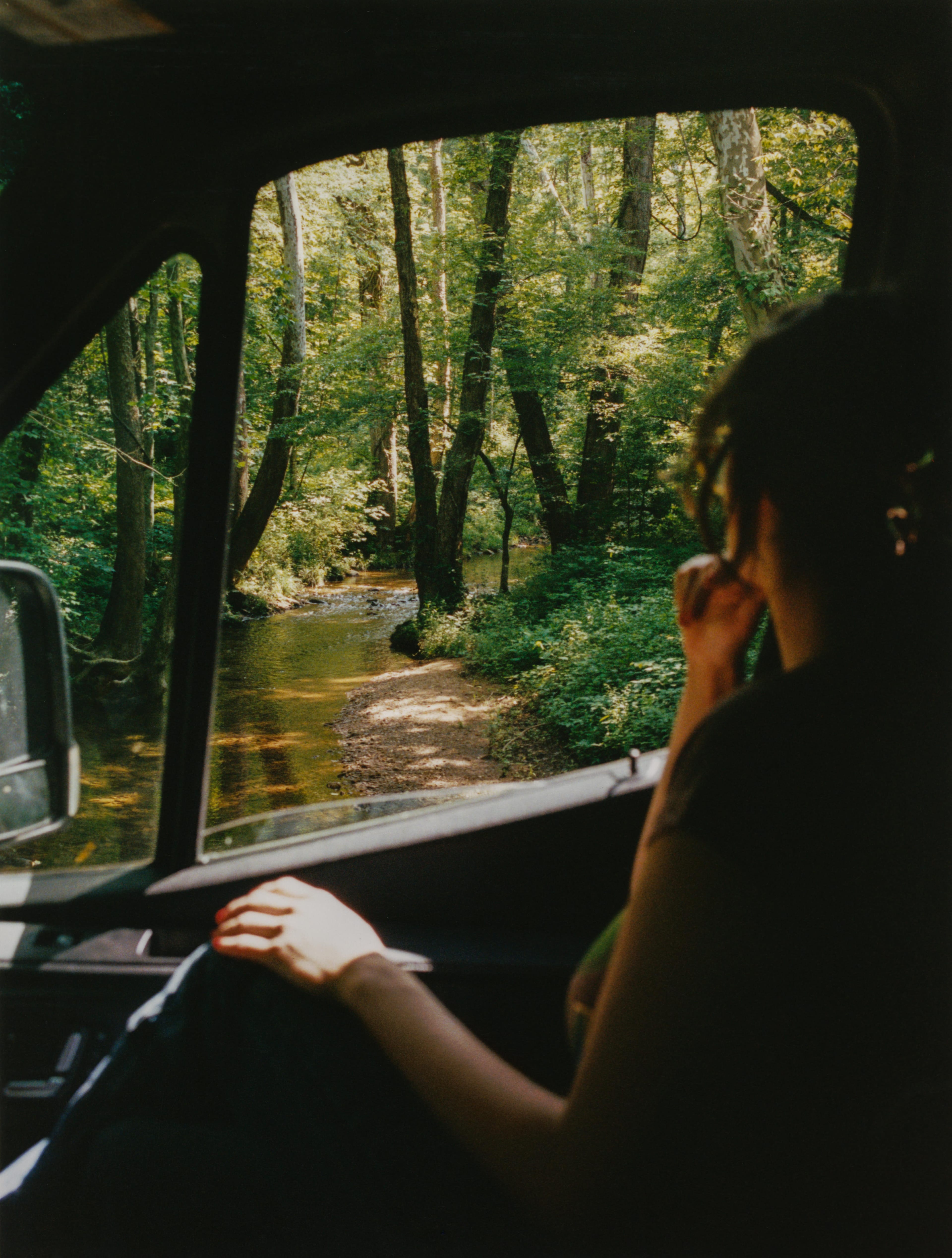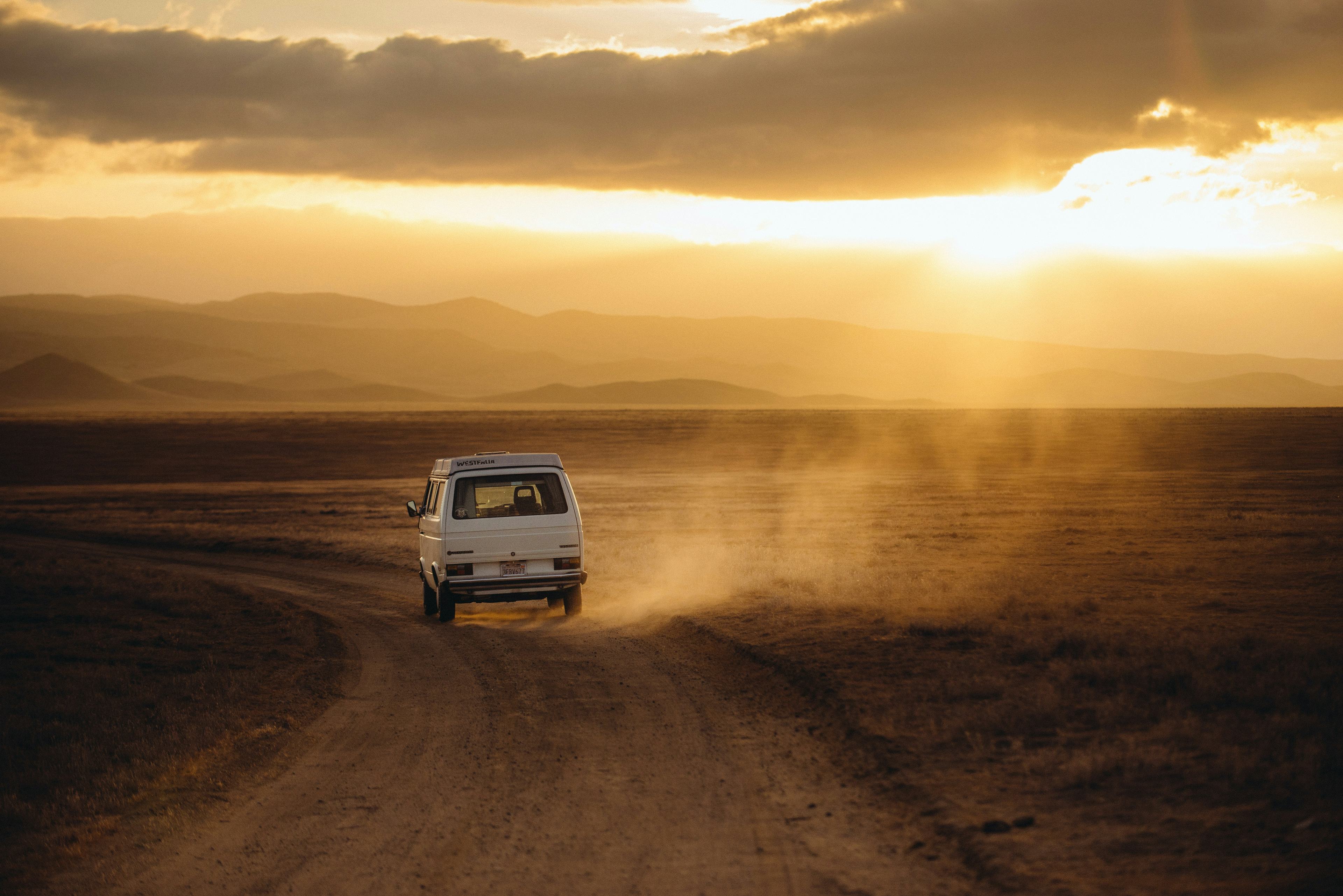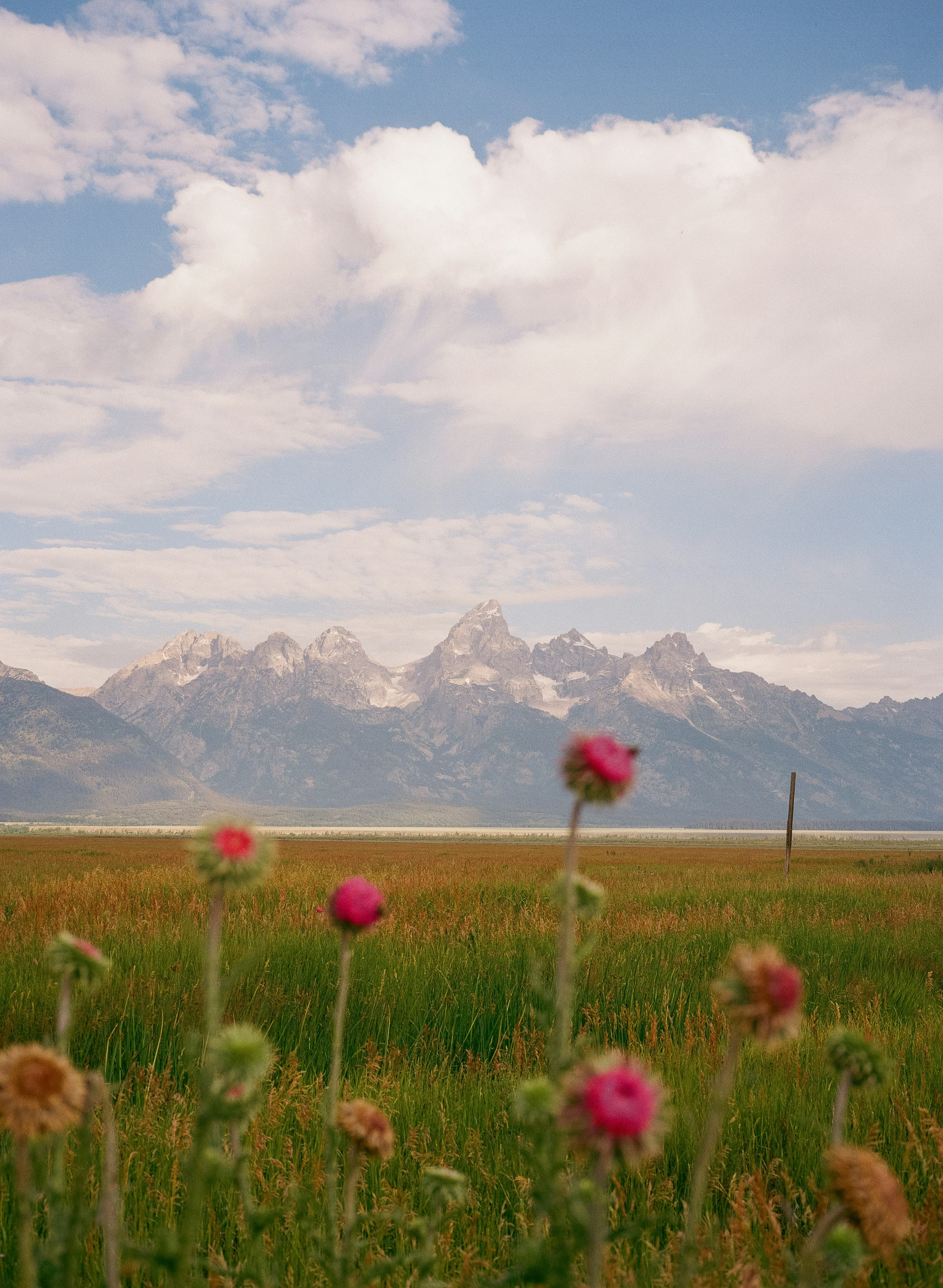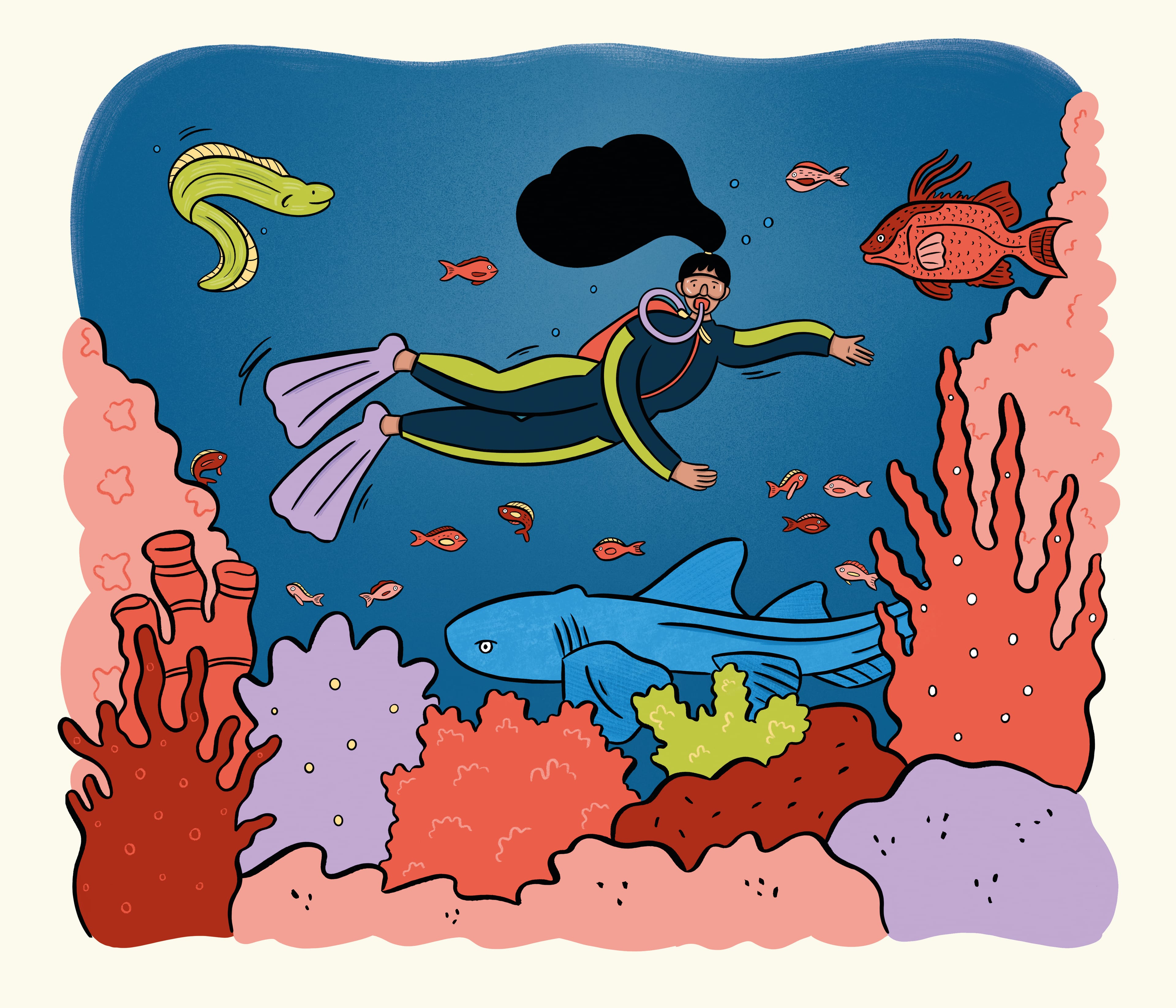
An overlanding expedition on the rugged Georgia Traverse points the way to new kinds of discovery—in more ways than one.
Seeking little more than solitude and a place to sleep, my black Labrador Jed and I had rocked along a single-track vehicle trail for hours. We’d dallied along the way, stopping on a road barely clinging to the mountainside to let the beauty of North Georgia’s Blue Ridge Mountains wash over us like the waves they resembled. Lines of summits faded from the stark verdancy of nearby tree-shrouded peaks to successively paler shades of blue on the horizon. Misty winds pushed by summer rainstorms wet our faces. Now, in a campsite featuring miles-long 270-degree views of the same terrain, I contemplated making camp hours earlier than I’d intended.
A friend always says, “Know when you’ve made it,” and the notion of lying in my rooftop tent, contemplating the vista before me till the sun burned out, felt like an appropriate acknowledgment. But I’d come to the Georgia Traverse, a 390-mile overlanding route spanning North Georgia from South Carolina to Alabama, with excursions into North Carolina and Tennessee, for adventure. Plus, the thunder in the distance and the bear scat on the ground made me think camping at lower elevations might be the better idea.

The Makings of the Georgia Traverse
Overlanding, a style of backcountry vehicle travel that is growing rapidly, offers enthusiasts the chance to explore remote places in rigs designed for self-reliance, self-sufficiency and living in the moment. Much of that adventure involves seeing what is around the next curve in the road. I’ve sought the same experience on foot for decades. In fact, unless you count living in a Humvee for months as a U.S. Marine, I’ve never been an overlander. But I also never knew that overlanding routes like The Georgia Traverse exist. And because I could not think of a more classic American adventure than pointing a vehicle west to see what happens or a better place to do it than the state in which I grew up, I called David Giguere.
Giguere is a mapping expert who helps plan and manage Atlanta’s growth. He’s also an experienced overlander with a passion for problem-solving. “In the nineties, I drove up to Alaska with a friend for a couple of months in a four-wheel drive with a slide-in camper,” he says. “That was probably when I started to understand it was about trying to put yourself into an unfamiliar area, relying on your equipment and your ability.” Giguere created the Georgia Traverse, a years-long labor of love born in 2010, when he decided “to see how many miles I could string together off pavement.”
The project became an intricate route connecting public lands across Georgia’s northern borderlands. And though the Traverse doesn’t have the official status of the nation’s great thru-hiking trails or scenic drives, it does have a following, expressed through YouTube videos and Reddit threads, among the enthusiasts who have embraced overlanding. In that, the Traverse is part of a grassroots movement across the nation: routes like the Trans New Hampshire Expedition and the Trans-Wisconsin Adventure Trail have cropped up, charting a new method for exploring rugged roads and country.
According to the Specialty Equipment Market Association, overlanding has seen a double-digit growth in popularity since 2020. Troy Pittman, of Wilmington, North Carolina’s Cape Fear Customs, a shop that retrofits Jeeps and trucks for rough travel, says overlanding “gives you that feeling that you’re accomplishing something that most anybody else is never going to do, and you get to. You’re a small percenter.”
Twenty-four hours into the Georgia Traverse, I was beginning to understand.


Mapping an Overland Route in Georgia
Though it started in a serene pool at the base of King’s Creek Falls, sunlight reaching through mountain laurel to make polychromatic the cool mist swirling around me and Jed, my first morning on the Georgia Traverse was anxiety-ridden. I’d accepted that half the adventure would come in discovering what I’d failed to consider. But I’d underestimated how much those things could matter, specifically the absence of cell coverage. As the icon representing my truck moved into successively blurring areas on my phone screen, I thought of an ancient mariner’s chart, unknowns marked “Here there be monsters.”
The Georgia Traverse website lays out exactly how to download its 500 waypoints, something I am sure is simple for anyone who does not still have an AOL address. I do, however, and without a cell signal, I could not navigate the precise route. For much of my life, I’ve gone in whatever direction felt right, but that was not going to work for driving ever deeper into the mountains of Georgia’s Chattahoochee-Oconee National Forest.
I’d studied the first leg sufficiently to follow a road west through the same mountain valley I backpacked regularly as a teenager. But by the time I hit pavement in Dillard, Georgia, I wanted a paper map. After some unsuccessful attempts that underscored the relic status of both paper maps and myself, I finally secured one featuring North Georgia’s trout streams at Dillard’s hardware store. It featured no roads.
Heading eight miles south to Clayton, Georgia, I rued how much I felt like a starving pioneer watching a town grow larger on the western horizon as the signal strength on my phone moved from SOS mode to three bars. Driving beneath ridgelines where I’d spent childhood summers, the raw red earth of housing developments had rendered the soft curves of the Blue Ridge into something more akin to a fighter’s mouth, all jagged and missing teeth. I longed for the solitude of my first few hours on the Georgia Traverse.
In a grocery store parking lot, I screenshotted the remainder of the Georgia Traverse and hastened to the next off-road section, where an eastern tiger swallowtail butterfly raced my truck down a straightaway. I slowed to let him win, cheering as he danced through the air, to disappear around a bend in the road, taking my elevated blood pressure with him.

Public Lands and Off-Road Travel
As an outdoorsman, I am drawn to individual pursuits. I like to pit myself against myself, quietly. This usually means I avoid noise and exhaust. But with every westward mile of the Georgia Traverse, I felt my prejudices falling away. I was beginning to see that overlanding was just another way to engage with the world, specifically the great American outdoors. There are 640 million acres of public land, held in common trust for the nation’s citizenry, all currently challenged by various political and economic forces. It’s a time when people who treasure time outside need to find common ground.As American public lands authority Hal Herring said to me, “You can’t go around spitting on other people and telling them they ain’t as cool as you because they like to do something else. When you’re talking about the public lands, inclusion expands the collective effort to achieve an end that might be a more tepid version of what each one of us wants, but a fully expressed version of what all of us want.”
On this trip, with no purpose beyond forward progress, I found quiet mental space to accommodate thoughts we don’t get on a trip to a place rather than because of one. I was coming to understand that overlanding offers a new way to connect with the land I love. Trey Barnett, a Long Creek, South Carolina, coffee shop, pizza restaurant, and rafting company owner, offered: “If someone has a positive education and emotion around natural experiences, that tree is planted deeper in that person’s heart.”
Barnett’s truth was born out as Jed and I dawdled on the Richard B. Russell Jr. Scenic Highway, enduring extended time on asphalt to see the views from a road named after a relative of mine. Though I’d become inured to solitude and missed the dirt stretches of the route, we stopped and talked to people traveling in RVs, on motorcycles and in overlanding trucks more fully realized than my own. At Brasstown Bald, we hiked to the highest point in Georgia. Sharing views of Georgia, Tennessee, North Carolina, and South Carolina, a man from Florida exclaimed, “The Georgia Traverse? Man, I want to do that!” when I mentioned I was driving across Georgia on dirt roads. He detailed his own planned adventure bike trip on an overland route from Florida. Perhaps someone can’t envision themselves walking 30 miles to see a grand vista (as I prefer). But if driving their custom overland vehicle gets them there, and we both arrive at the same appreciation for the land, who am I to question the means?

Off-Grid on the Georgia Traverse
There are moments when you realize you have mistaken enthusiasm for capability. Staring through my truck’s windshield at little more than the hood and the blue sky beyond, I had reached one. Jed and I had been grinding our way up a knife-edge ridgeline for an hour, the insistent beeping signaling the lowest gear of four-wheel drive and creating an “incoming missile” vibe in the cab. Despite increased pressure on the gas pedal, my truck slid backwards, tires failing to find purchase on what felt like a 45-degree slope. Jed fought to stay upright as the back seat jerked and shifted like an amusement park ride. Looking left, I wondered if trees could arrest a truck tumbling ever faster down a mountainside. I had come for adventure.
James Elroy Flecker’s poem The Golden Journey to Samarkand, particularly the line “We are the Pilgrims, master; we shall go Always a little further,” has inspired me to many similar experiences. I’ve learned to take stock. Jed and I were hours out of cell coverage. No one knew where we were, beyond “the Chattahoochee-Oconee National Forest.” I was well past the limits of my experience as an off-road driver. The only certainty was that backing down the mountain was going to be a tooth-sucking experience for a coastal dweller, even one with North Georgia roots and a decent ability to back up a boat trailer.
I remembered David Giguere saying, “You’re thinking, ‘When was the last time I had cell service? How far do I have to walk if I break down right now?’”

I’d needed an adventure. Now I wondered if I had enough life insurance, perhaps a backhanded confirmation that I was truly living. My midlife crisis aside, there was a problem to be solved, the essential attraction of overlanding. Jed and I needed to not be where we were. Only I could get us somewhere else. It was a situation in which I could find a rare singular focus, like a mantra focusing a monk’s breath.
About Our Overlanding Rig
For this story, our photographer, Ethan Gulley, traveled separately, exploring the Georgia Traverse in a Beast MODE 4x4 van provided by Storyteller Overland.
Built on the Mercedes-Benz Sprinter (with a 144-inch wheelbase), this model exemplifies the brand’s self-sustained commitment to the pursuit of overlanding. Among other features, it includes the Elvlqut Adaptive Suspension System, designed for precision steering over rough terrain and high winds, plus off-grid-ready solar and internet systems.
So, with Jed’s head supportively resting on my left shoulder, I shifted into reverse, grabbed the bottom of the steering wheel, and, looking over my right shoulder like I was at a boat ramp, slipped my foot off the brake and let gravity have its way.
On our last morning, Jed and I awoke deep in a valley shaded by towering pine and oak, a cool breeze whispering as the sun tiptoed into the morning gloom, before slashing through the canopy to burn away the remnants of the night’s welcome chill. Our lives offer so few moments without intrusions that I didn’t want to break camp for the final time. I took my time with coffee and breakfast, moving slowly in storing my tent and packing for travel.
The creek beside which we’d slept offered a perfect place to throw black and white bumpers for Jed to retrieve, my calls and whistles the only noises breaking the silence we’d enjoyed since the night before. Still not ready to leave, I grabbed a trash bag and scoured the campsite for anything that wasn’t there by design before simply admitting the truth to myself and sitting down on my cooler to watch the wind shake the canopy over us. Closing my eyes, I took a deep breath, thinking how much these wild spaces matter to all Americans, no matter how one accesses them or even if one never does. The notion that there are places where any American may avail themselves of writer Edward Abbey’s “sweet and lucid air,” to “sit quietly for a while and contemplate the precious stillness, the lovely, mysterious, and awesome space,” is worth more than any dollar amount anyone might attach to these places.
The appeal of being one of Troy Pittman’s “small percenters” was increasingly apparent with every mile I put between myself and a paved road. Of course, paved roads connect the Traverse’s off-road portions, meaning every mile away from one is a mile towards another. It’s just the reality of a country that’s been fully explored in the geographic sense, where traveling a straight bearing will eventually bring you somewhere someone has already gone. Regardless, the moments in the going offered me time to think. Maybe the inner recesses of our mind are where we most need to explore.
Departing our camp, I didn’t bother checking the GPS I knew wasn’t available. I knew which direction to go, that eventually I’d reach pavement, a little sadder for the transition. Confronted by the highway, I turned south and joined summer vacation traffic. I got honked at before realizing I was driving 45 miles an hour on the highway, a speed that felt outrageous after three days at five to nine miles per hour. Thinking back to the first day, the blurry areas of the map felt less like somewhere there might be monsters than somewhere to run away from them.

This article was originally published in the October 2025 issue of Wildsam Magazine.





